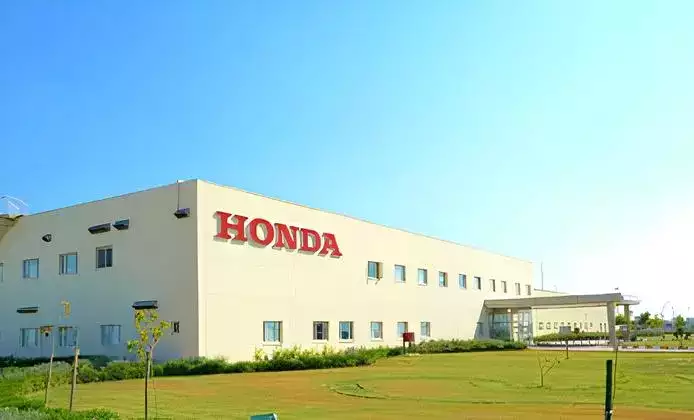
“Among the crucial markets in Asia, we will focus on expanding in India and Indonesia,” the company has stated in its Honda Report 2023 which has been uploaded on its website. Beyond this, the Japanese automaker is “contemplating” the next-generation batteries designed for electric motorcycles.
The focus here will be on high output, elevated energy density and extended lifespan while ensuring “the paramount safety of this vital battery component”. As part of its effort to “aptly serve” the needs of diverse regional markets, Honda is “propelling rapid development” to furnish battery systems tailored to distinct usages, encompassing NCM-based (nickel-cobalt-manganese) and LFP-based (lithium-ion iron phosphate) solutions.
Honda Motorcycle & Scooter India (HMSI), the wholly-owned local arm with factories in Haryana, Rajasthan, Karnataka and Gujarat, has already made known that it is working on an electrification roadmap. As part of this plan, a specialised manufacturing facility, Factory ‘E’, will be established at its Karnataka unit and designed appropriately to optimise production with high efficiency and maximum production value.
Localisation focus
Honda's electric offering will use locally- made parts such as batteries and PCU while the motor will be made in-house. The advanced automated facility will ramp up gradually to produce one million EVs by 2030. HMSI has said its futuristic EV platform, Platform ‘E’, will serve as the foundation for a variety of models including the fixed battery type, swappable battery type, and mid-range EVs.
Project Vidyut has been initiated for this electrification journey which will see HMSI launch two new electric two-wheelers: a mid-range and a swappable battery type that uses the Honda Mobile Power Pack e. Charging stations would also be installed across its network with some transformed into Workshop ‘E’ that will house battery exchangers for swappable battery type and charging cables for fixed battery type.
Honda Report 2023 throws a broad hint at the two-wheeler form that could be launched in India without getting into too many specifics. There is a reference to the EM1 e: which was introduced as a personal-use model in Japan last year with plans underway to expand its presence in Europe and Indonesia, “along with unveiling a new model in India”.
From Honda’s point of view, its focus remains on accelerating the development and launch of electric motorcycles “tailored for individuals” particularly in the burgeoning Asian region. The company has also acknowledged that the popularity of these bikes hinges on the “resolution of concerns” regarding battery cost, charging infrastructure and cruising range.
It is precisely to answer these issues that it launched the Honda Mobile Power Pack e, a portable and swappable battery. “We introduced a battery-sharing service initiative in 2022 using the swappable battery technology. To facilitate this, we have established local subsidiaries in both India and Indonesia,” Honda has stated.
Japanese consortium
Back home in Japan, Eneos, an energy company, along with Honda, Kawasaki, Suzuki and Yamaha incorporated Gachaco in 2022. “We plan to further expand and develop this business in the future,” states Honda in its report.
The key in its two-wheeler electric roadmap is to focus on business-oriented models that are seeing escalating demand. Among these, the Benly e:, Gyro e: and Gyro Canopy e: stand as “prime examples” with each of them equipped with the Honda Mobile Power Pack e. The Benly e: is now being made not only in Japan but also in Thailand. The Thai-produced models are also exported to Vietnam.
The company plans to sharpen its competitive edge “by striving for an adaptable framework poised to navigate environmental fluctuations”. Some of the “tangible endeavours" include component sharing, expedited development of mass production, cost innovation through the utilization of cost-effective catalysts and the establishment of a resilient supply chain embracing risk diversification.
“These actions collectively amplify efficiency across the entirety of the value chain, ensuring enduring profitability while fortifying the bedrock of our leadership in the electrification domain as we fervently pursue an augmented presence,” reiterates Honda.
While driving home the point that its motorcycles address the global mobility needs of a diverse clientele and enjoy widespread use, the company now intends to leverage its “competitive manufacturing technologies and the expertise amassed” through the development of internal combustion engine vehicle platforms in electric.
E-motorcycle platforms
“We will embark on crafting an array of electric motorcycle platforms catering to the demands of customers across different nations. Through streamlined manufacturing processes, we are committed to leading the worldwide electric motorcycle electrification movement, ensuring that electric vehicles provide the same exhilarating “joy of mobility” as their ICE counterparts, all at a more accessible cost,” states Honda.
In order to meet the “myriad needs” across the globe, the Japanese automaker will not only focus on electric products intended for business use “within somewhat restricted contexts” but also actively design solutions for personal use across a multitude of scenarios. For personal-use models, the ability to select the most suitable battery type in accordance with usage environments and convenience “holds paramount importance”.
To empower customers to opt for their preferred battery type, the company will offer two options, including swappable and plug-in battery, catering to a diverse range of demands. “By 2026, we intend to globally introduce a total of 10 or more electric motorcycle models, with the goal of achieving annual sales of one million units. By 2030, we aim to further expand the lineup and target sales of 3.5 million units,” Honda has indicated.
Disclaimer: The copyright of this article belongs to the original author. Reposting this article is solely for the purpose of information dissemination and does not constitute any investment advice. If there is any infringement, please contact us immediately. We will make corrections or deletions as necessary. Thank you.





